Australian homeowners often debate the merits of timber sleeper walls versus concrete sleepers. On one hand, the rustic appearance of a timber retaining wall creates an attractive, earthy vibe that can enhance any garden. On the other hand, concrete sleepers are renowned for their extreme durability and strength.
Atleast, that’s what you’ll be led to believe!
Concrete sleepers have come leaps and bounds in recent years, now coming in different finishes and textures. This allows them to match a variety of design landscaping styles, from country cottages to modern minimalists. There are even concrete sleepers that resemble timber, providing that sought-after wood look without the issues that come with real wood.
If you’re building a retaining wall, you may be wondering which type is best for you. To help you make a decision, we’ve put together a list of the hallmarks of each type of sleeper.
Why Choose Concrete Sleepers
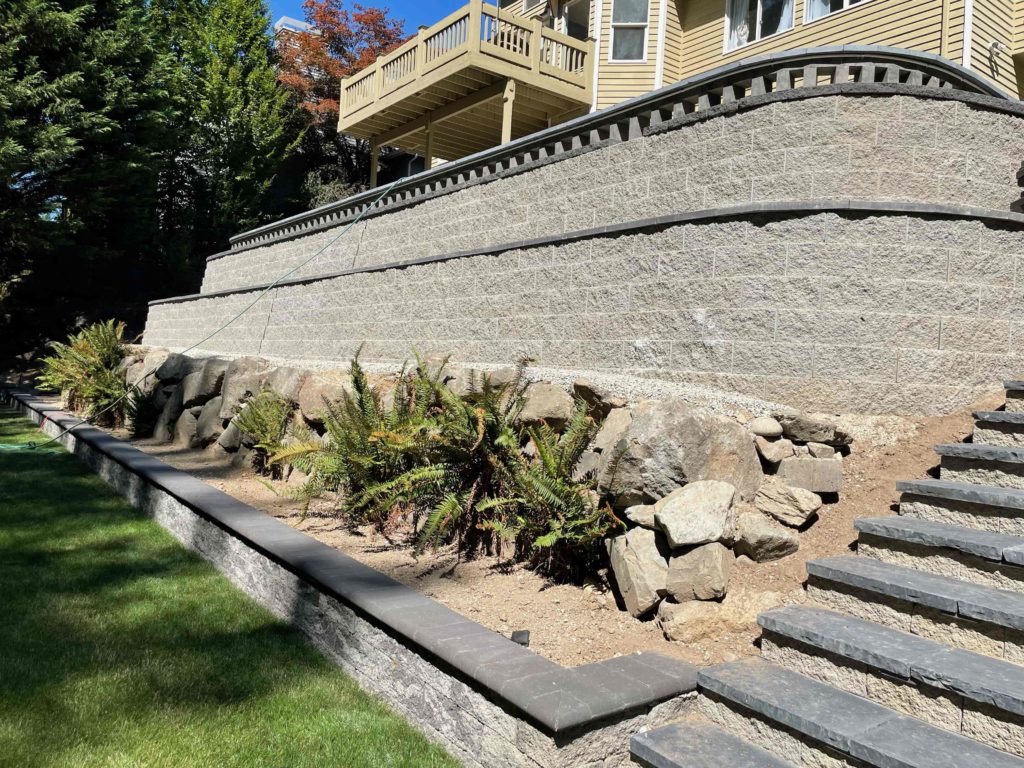
If concrete sleepers that resemble a slab of grey concrete come to mind when you think of these, think again! Concrete sleepers have been modernised to include a range of finishes, making them a stylish addition to any space.
READ: How High Can Concrete Sleepers Retaining Wall Go?
Check out the benefits of concrete sleepers below:
Durability and Strength
Although a retaining wall is multi-functional, its primary purpose is to bear the weight of the soil behind it. Concrete sleepers can withstand immense pressure from the soil, with many being reinforced with metal bars or rods for extra strength. This makes them the ideal choice for a retaining wall that must support large amounts of lateral soil pressure.
Low Maintenance
Concrete sleepers are impervious to rot and warp, unlike timber sleepers which aren’t treated. This means the material won’t decay and wilt under soil pressure, making it a long-lasting and cost-effective solution. It’s also low maintenance, requiring only a yearly clean to remove any dirt and debris.
A Straight-forward Installation Process
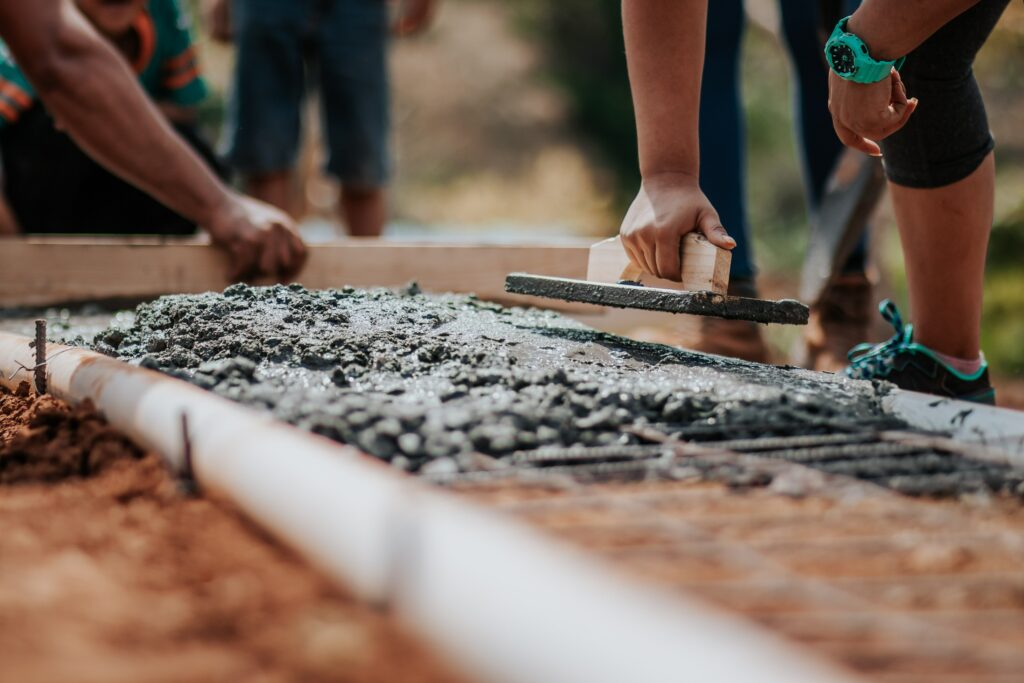
You’ll find a wide range of modular concrete sleepers on the market, making them easier to install compared to concrete sleepers of the past. Their designs enable DIY builders to lock individual sleepers together without mortar or any other locking material.
Various Finishes
Stackstone concrete sleepers look like natural rock, adding an earthy vibe to your garden. If you want a more sleek and contemporary look, opt for sleepers with a smooth texture like Smooth Face Concrete Sleepers. Lastly, Woodgrain Concrete Sleepers offer a realistic wood-like finish similar to timber sleepers.
Concrete sleepers are versatile in terms of design and finishes, making them suitable for any landscaping design. You can choose a finish that adds contrasts to your yard i.e. Stackstone sleepers for a rural home, or a woodgrain finish in a modern, commercial space.
Flexible Designs
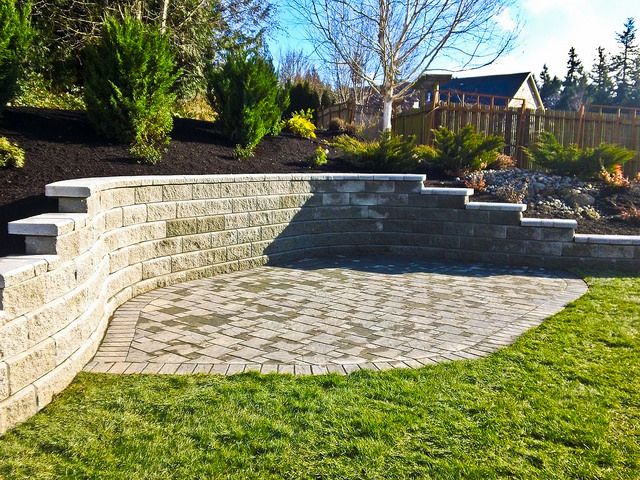
A concrete sleeper isn’t exclusive to one shape. This sleeper can also be made circular, allowing designers to create attractive garden beds and curved walls.
Worried about the cost of building a retaining wall with concrete sleepers? Read this: How Much Does A Concrete Sleeper Retaining Wall Cost?
Why Choose Timber Sleepers
Timber retaining walls can be made from hardwood and treated pine, which can be treated for extra protection against rot and warping.
If your garden is looking a little industrial, bare or bland, timber sleepers can inject some warmth and homeliness. And don’t forget, like concrete sleepers, they’re perfectly capable of holding back soil!
Check out the benefits of timber sleepers below:
Quick Construction
Since you don’t need to mix concrete or mortar, you can install timber sleepers quickly and easily. This makes this ideal for DIY enthusiasts, or if you’re working on a tight budget and timeline.
Has the Beauty that Only Natural Wood Provides
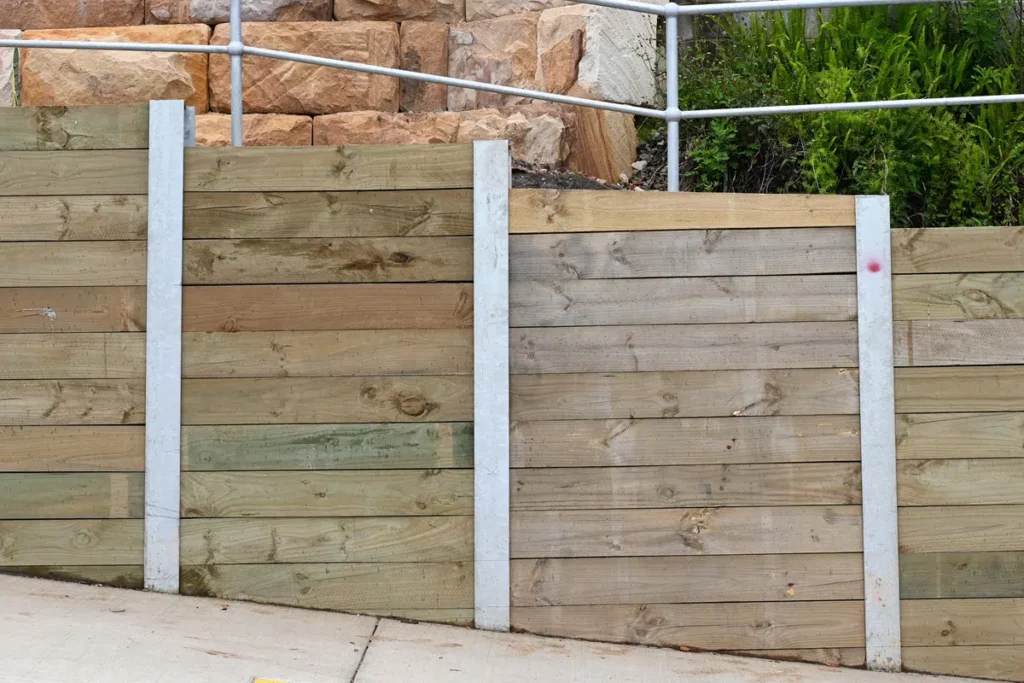
Timber sleepers can either have a natural timber appearance or a complex system of knots and grains. Both have their charms and can be incorporated into your landscaping design. While a plain timber wall offers no additional decoration, that’s essentially the point for many homeowners – wood by itself is a beautiful material!
While woodgrain concrete sleepers can imitate real wood, you can’t beat the real thing!
Easy to Repair
Wood, in general, can be treated with stains, oils and paints, to increase its longevity. If your timber wall is damaged or worn, it’s easy to repair by either replacing the affected sleepers or fixing them with new screws, nails or brackets. Unlike concrete, wood can be easily cut to fit any space.
Budget-friendly
Concrete sleepers range between $450 – $700 per square metre of reinforced blocks. However, this price range doesn’t account for rendering, which is an additional $50 per square metre.
Treated pine sleepers, meanwhile, only cost between $250 and $350 per square metre and $300 and $450 per square metre for hardwood.
The prices range above also includes labour costs, and you’ll find that timber is generally the cheaper option. However, neither include excavation costs or the purchase of soil, which should be factored into your landscaping budget.
Change Colours
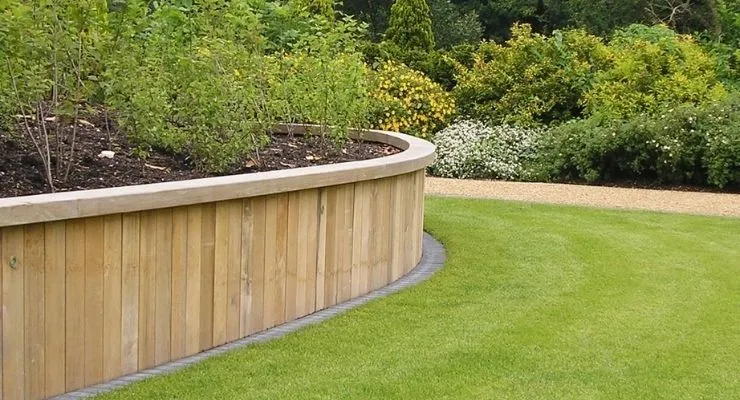
Timber sleepers can be painted and repainted for a different look, or to match existing designs. They can also be stained and treated to preserve the initial colour.
They’re Strong Enough to Withstand Soil Pressure
While concrete sleepers have unsurpassed strength, the strength of timber sleepers are nothing to scoff at. With proper treatment and maintenance, a wooden retaining wall lasts 20-25 years. This means you can enjoy your garden for many years to come without having to worry about erosion or soil displacement.
Just note that your timber retaining wall will have to be replaced at some point. Concrete sleepers, meanwhile, can last for a lifetime.
So is Concrete or Timber the Best Choice?
While there isn’t a conclusive answer, you can evaluate your own situation to determine which is best. When assessing the benefits of each option, consider the following:
Maintenance – Don’t have time to upkeep your wall? Concrete sleepers only need to be cleaned once a year.
Durability – Need a retaining wall that could theoretically last forever? Concrete sleepers win again.
Appearance – If you love the look of wood, nothing beats the real thing. While a wood grain-patterned concrete block looks great, nothing beats the charm of a natural timber wall.
Cost – Timber sleepers usually have a lower upfront cost, but may need to be replaced after 20-25 years. You’re also more likely to repair wood than concrete, so you could find yourself paying more over the long term.
Construction time – While timber sleepers have always gained the upper hand with quick construction times, modular concrete sleepers are now available.
So there you have it! Consider all the factors above to decide which material is best for your needs. And if you’re still stuck, don’t hesitate to ask a professional landscaper or retaining wall builder for advice.
Which comes to our next point.
Let the Experts From RWS Help
Not sure whether a timber or concrete retaining wall fits your outdoor space? Instead of going at it alone, trust the experts at RWS to help you. Our landscaping experts can assist in designing, constructing and maintaining your new retaining wall, taking the guesswork out of the equation.
RWS also provides the best concrete sleepers in Melbourne, along with galvanised steel posts to provide extra reinforcement. Contact us today to learn more about your options – we look forward to working with you! Our services are also available in Brisbane, Gold Coast, and Sunshine Coast.
Need more tips from RWS? Here’s How to Weld a Colorbond Fence on Top of a Concrete Sleeper Retaining Wall and The Difference Between Steel H Beams and I Beams


